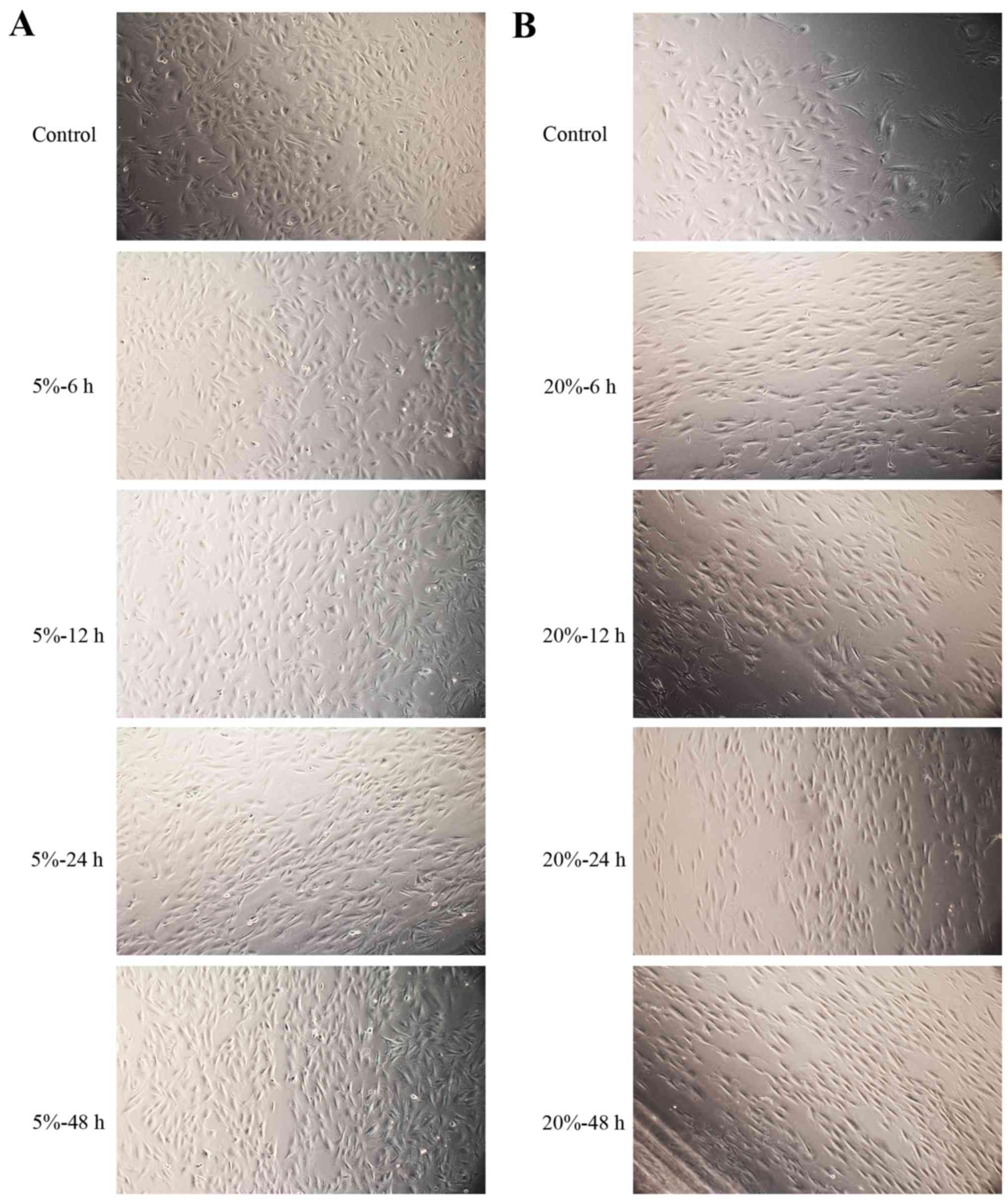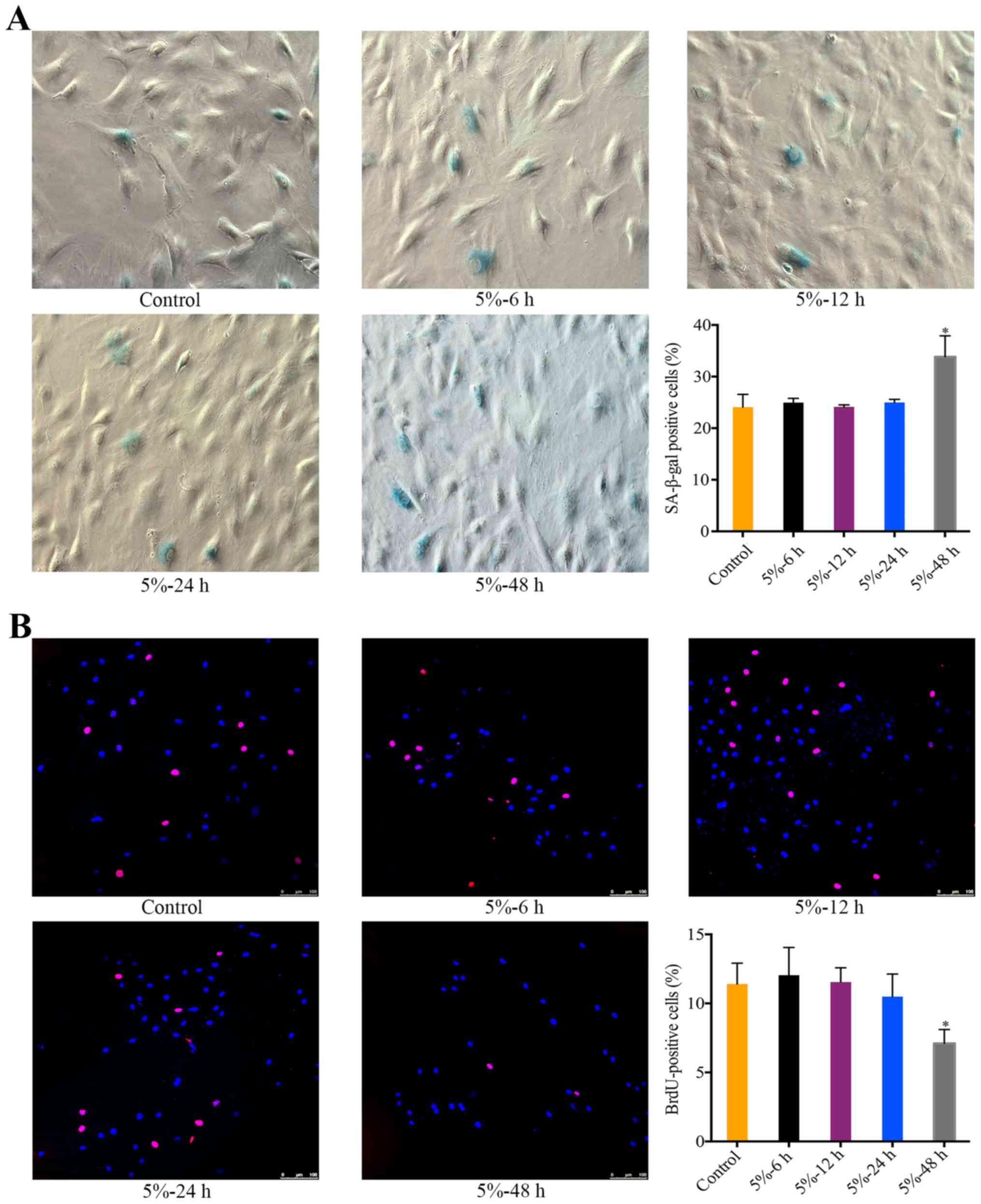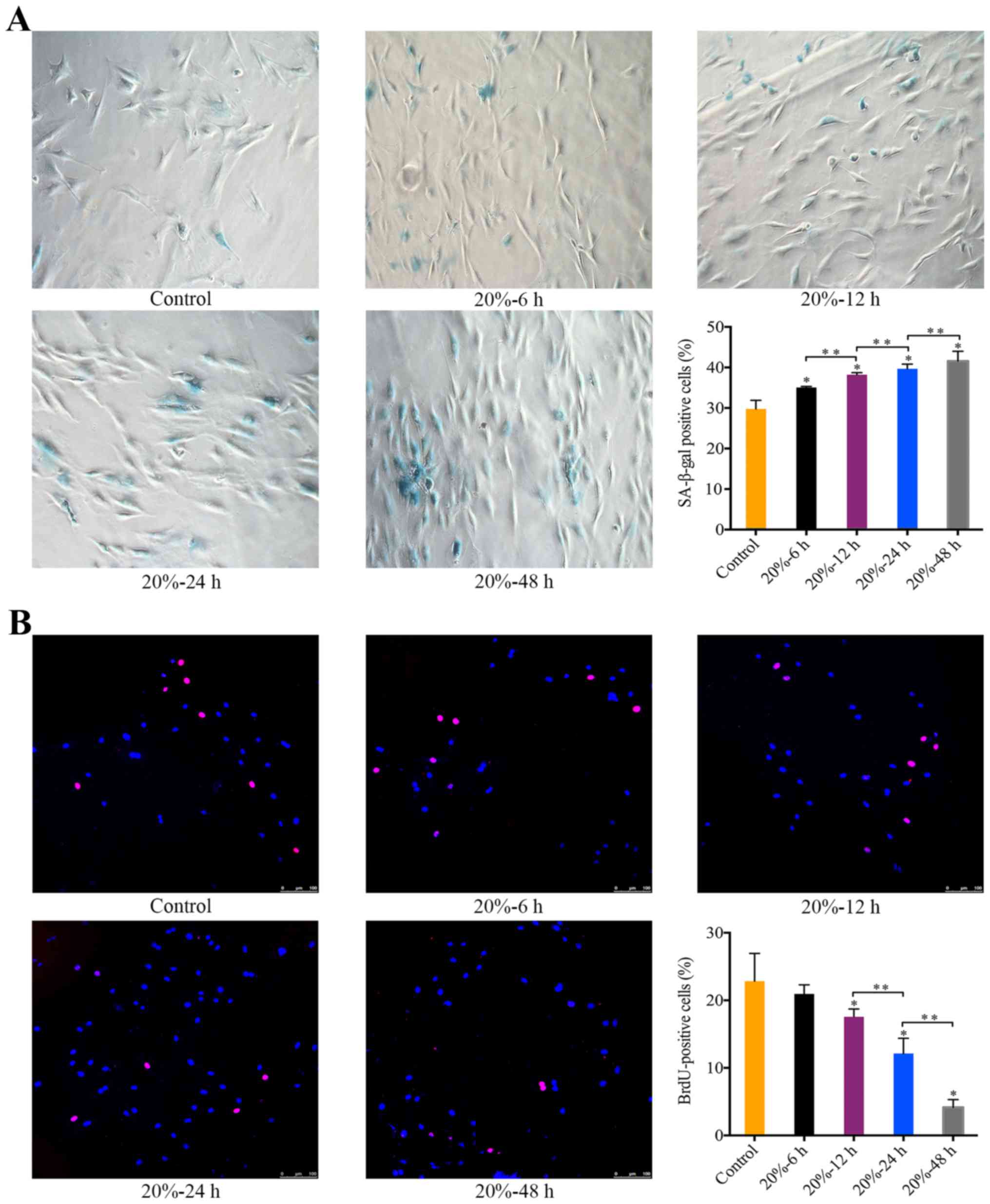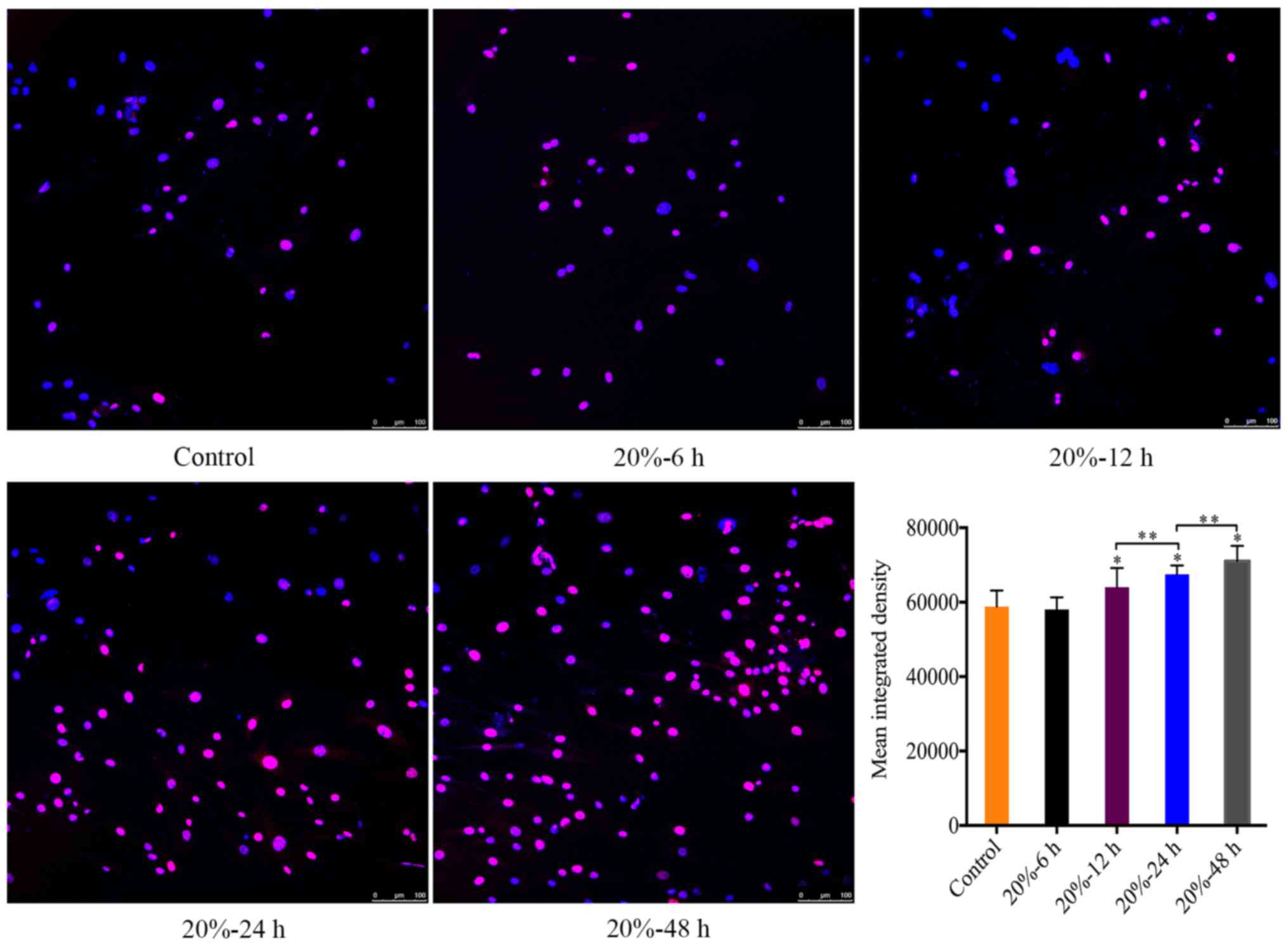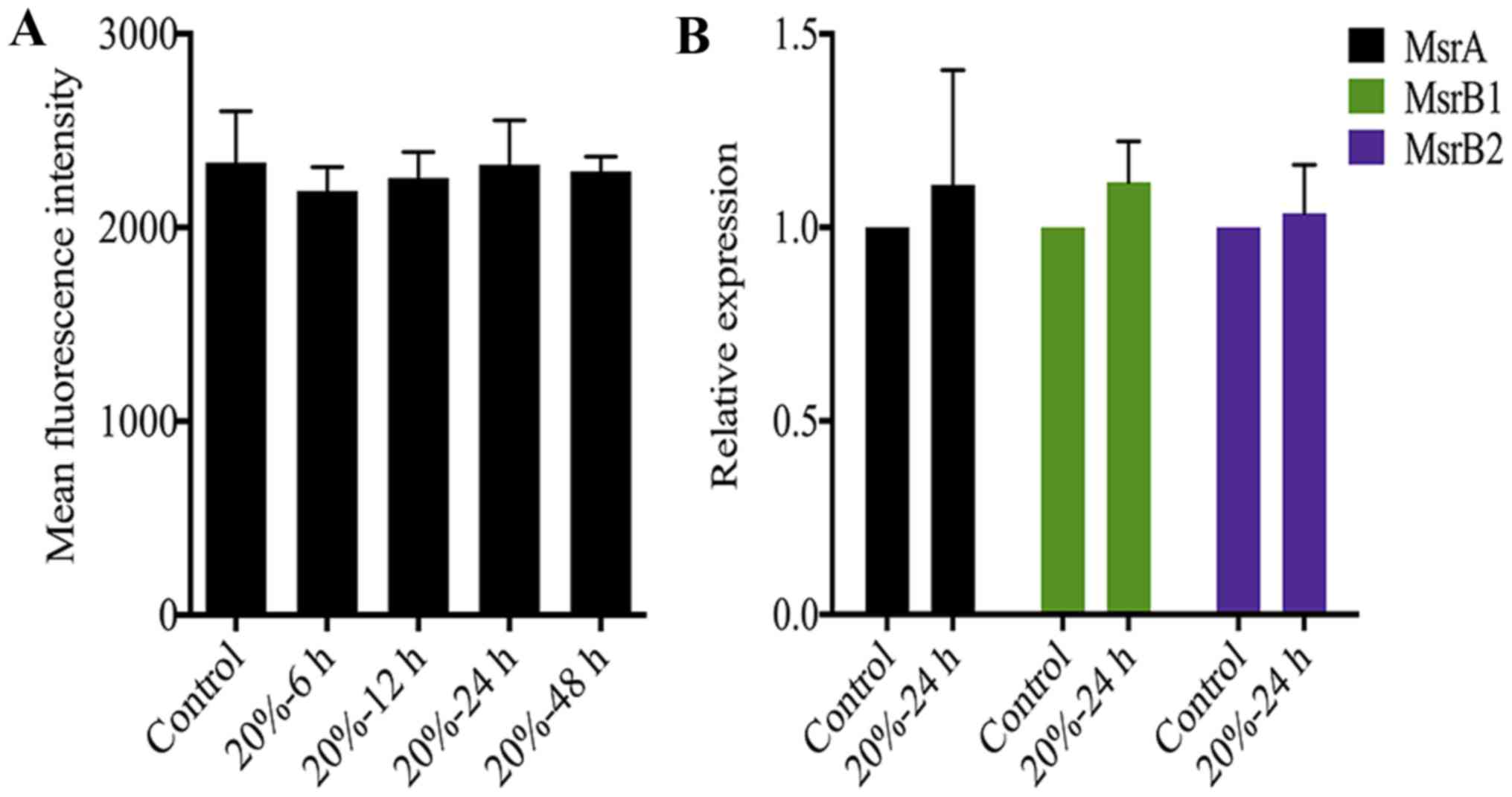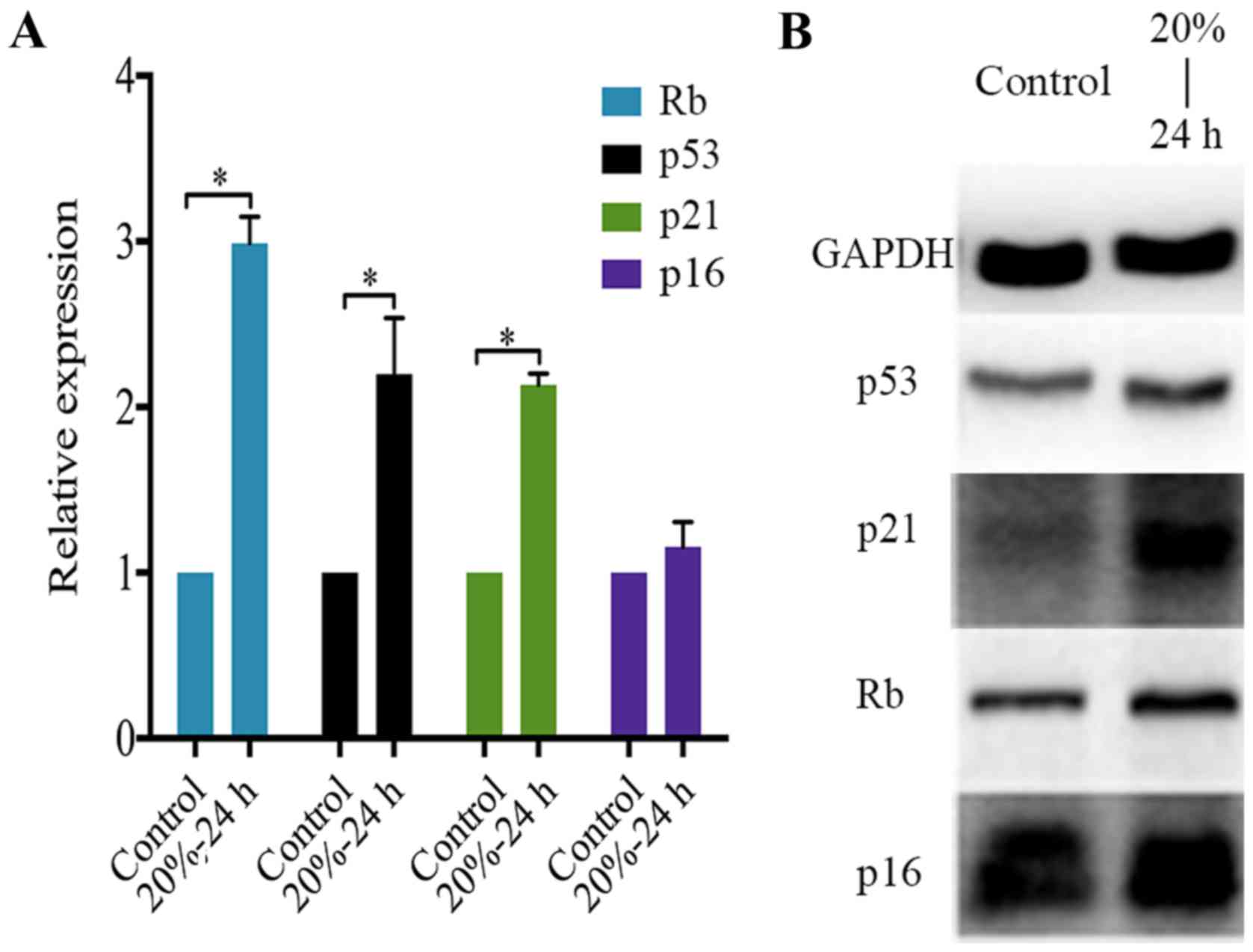|
1
|
Vos T, Flaxman AD, Naghavi M, Lozano R,
Michaud C, Ezzati M, Shibuya K, Salomon JA, Abdalla S, Aboyans V,
et al: Years lived with disability (YLDs) for 1160 sequelae of 289
diseases and injuries 1990-2010: A systematic analysis for the
Global Burden of Disease Study 2010. Lancet. 380:2163–2196. 2012.
View Article : Google Scholar : PubMed/NCBI
|
|
2
|
Hong J, Reed C, Novick D and Happich M:
Costs associated with treatment of chronic low back pain: An
analysis of the UK General Practice Research Database. Spine.
38:75–82. 2013. View Article : Google Scholar
|
|
3
|
Cheung KM, Karppinen J, Chan D, Ho DW,
Song YQ, Sham P, Cheah KS, Leong JC and Luk KD: Prevalence and
pattern of lumbar magnetic resonance imaging changes in a
population study of one thousand forty-three individuals. Spine.
34:934–940. 2009. View Article : Google Scholar : PubMed/NCBI
|
|
4
|
Takatalo J, Karppinen J, Niinimäki J,
Taimela S, Näyhä S, Mutanen P, Sequeiros RB, Kyllönen E and
Tervonen O: Does lumbar disc degeneration on magnetic resonance
imaging associate with low back symptom severity in young Finnish
adults? Spine. 36:2180–2189. 2011. View Article : Google Scholar : PubMed/NCBI
|
|
5
|
Roberts S, Evans H, Trivedi J and Menage
J: Histology and pathology of the human intervertebral disc. J Bone
Joint Surg Am. 88(Suppl 2): 10–14. 2006.PubMed/NCBI
|
|
6
|
Kanayama M, Togawa D, Takahashi C, Terai T
and Hashimoto T: Cross-sectional magnetic resonance imaging study
of lumbar disc degeneration in 200 healthy individuals. J Neurosurg
Spine. 11:501–507. 2009. View Article : Google Scholar : PubMed/NCBI
|
|
7
|
Battié MC, Videman T, Kaprio J, Gibbons
LE, Gill K, Manninen H, Saarela J and Peltonen L: The Twin Spine
Study: Contributions to a changing view of disc degeneration. Spine
J. 9:47–59. 2009. View Article : Google Scholar
|
|
8
|
Wang D, Nasto LA, Roughley P, Leme AS,
Houghton AM, Usas A, Sowa G, Lee J, Niedernhofer L, Shapiro S, et
al: Spine degeneration in a murine model of chronic human tobacco
smokers. Osteoarthritis and cartilage/OARS. Osteoarthritis Res Soc.
20:896–905. 2012. View Article : Google Scholar
|
|
9
|
Stirling A, Worthington T, Rafiq M,
Lambert PA and Elliott TS: Association between sciatica and
Propionibacterium acnes. Lancet. 357:2024–2025. 2001. View Article : Google Scholar : PubMed/NCBI
|
|
10
|
Park EY and Park JB: Dose- and
time-dependent effect of high glucose concentration on viability of
notochordal cells and expression of matrix degrading and fibrotic
enzymes. Int Orthop. 37:1179–1186. 2013. View Article : Google Scholar : PubMed/NCBI
|
|
11
|
Neidlinger-Wilke C1, Galbusera F,
Pratsinis H, Mavrogonatou E, Mietsch A, Kletsas D and Wilke HJ:
Mechanical loading of the intervertebral disc: from the macroscopic
to the cellular level. Eur Spine J. 23(Suppl 3): S333–S343. 2014.
View Article : Google Scholar
|
|
12
|
Vergroesen PP, Kingma I, Emanuel KS,
Hoogendoorn RJ, Welting TJ, van Royen BJ, van Dieën JH and Smit TH:
Mechanics and biology in intervertebral disc degeneration: A
vicious circle. Osteoarthritis and cartilage/OARS. Osteoarthritis
Res Soc. 23:1057–1070. 2015. View Article : Google Scholar
|
|
13
|
Setton LA and Chen J: Mechanobiology of
the intervertebral disc and relevance to disc degeneration. J Bone
Joint Surg Am. 88(Suppl 2): 52–57. 2006.PubMed/NCBI
|
|
14
|
Risbud MV and Shapiro IM: Role of
cytokines in intervertebral disc degeneration: Pain and disc
content. Nat Rev Rheumatol. 10:44–56. 2014. View Article : Google Scholar
|
|
15
|
Vo NV, Hartman RA, Yurube T, Jacobs LJ,
Sowa GA and Kang JD: Expression and regulation of
metalloproteinases and their inhibitors in intervertebral disc
aging and degeneration. Spine J. 13:331–341. 2013. View Article : Google Scholar : PubMed/NCBI
|
|
16
|
Miyamoto H, Doita M, Nishida K, Yamamoto
T, Sumi M and Kurosaka M: Effects of cyclic mechanical stress on
the production of inflammatory agents by nucleus pulposus and
anulus fibrosus derived cells in vitro. Spine. 31:4–9. 2006.
View Article : Google Scholar : PubMed/NCBI
|
|
17
|
Gilbert HT, Hoyland JA and Millward-Sadler
SJ: The response of human anulus fibrosus cells to cyclic tensile
strain is frequency-dependent and altered with disc degeneration.
Arthritis Rheum. 62:3385–3394. 2010. View Article : Google Scholar : PubMed/NCBI
|
|
18
|
Li S, Jia X, Duance VC and Blain EJ: The
effects of cyclic tensile strain on the organisation and expression
of cytoskeletal elements in bovine intervertebral disc cells: An in
vitro study. Eur Cell Mater. 21:508–522. 2011. View Article : Google Scholar : PubMed/NCBI
|
|
19
|
Zhang YH, Zhao CQ, Jiang LS and Dai LY:
Cyclic stretch-induced apoptosis in rat annulus fibrosus cells is
mediated in part by endoplasmic reticulum stress through nitric
oxide production. Eur Spine J. 20:1233–1243. 2011. View Article : Google Scholar : PubMed/NCBI
|
|
20
|
Roberts S, Evans EH, Kletsas D, Jaffray DC
and Eisenstein SM: Senescence in human intervertebral discs. Eur
Spine J. 15(Suppl 3): S312–S316. 2006. View Article : Google Scholar : PubMed/NCBI
|
|
21
|
Le Maitre CL, Freemont AJ and Hoyland JA:
Accelerated cellular senescence in degenerate intervertebral discs:
A possible role in the pathogenesis of intervertebral disc
degeneration. Arthritis Res Ther. 9:R452007. View Article : Google Scholar : PubMed/NCBI
|
|
22
|
Wang F, Cai F, Shi R, Wang XH and Wu XT:
Aging and age related stresses: A senescence mechanism of
intervertebral disc degeneration. Osteoarthritis and
cartilage/OARS. Osteoarthritis Res Soc. 24:398–408. 2016.
View Article : Google Scholar
|
|
23
|
Feng C, Liu H, Yang M, Zhang Y, Huang B
and Zhou Y: Disc cell senescence in intervertebral disc
degeneration: Causes and molecular pathways. Cell Cycle.
15:1674–1684. 2016. View Article : Google Scholar : PubMed/NCBI
|
|
24
|
Dimozi A, Mavrogonatou E, Sklirou A and
Kletsas D: Oxidative stress inhibits the proliferation, induces
premature senescence and promotes a catabolic phenotype in human
nucleus pulposus intervertebral disc cells. Eur Cell Mater.
30:89–103. 2015. View Article : Google Scholar : PubMed/NCBI
|
|
25
|
Jeong SW, Lee JS and Kim KW: In vitro
lifespan and senescence mechanisms of human nucleus pulposus
chondrocytes. Spine J. 14:499–504. 2014. View Article : Google Scholar
|
|
26
|
Purmessur D, Walter BA, Roughley PJ,
Laudier DM, Hecht AC and Iatridis J: A role for TNFα in
intervertebral disc degeneration: A non-recoverable catabolic
shift. Biochem Biophys Res Commun. 433:151–156. 2013. View Article : Google Scholar : PubMed/NCBI
|
|
27
|
Xing QJ, Liang QQ, Bian Q, Ding DF, Cui
XJ, Shi Q and Wang YJ: Leg amputation accelerates senescence of rat
lumbar intervertebral discs. Spine. 35:E1253–E1261. 2010.
View Article : Google Scholar : PubMed/NCBI
|
|
28
|
Liang QQ, Zhou Q, Zhang M, Hou W, Cui XJ,
Li CG, Li TF, Shi Q and Wang YJ: Prolonged upright posture induces
degenerative changes in intervertebral discs in rat lumbar spine.
Spine. 33:2052–2058. 2008. View Article : Google Scholar : PubMed/NCBI
|
|
29
|
O'Connell GD, Johannessen W, Vresilovic EJ
and Elliott DM: Human internal disc strains in axial compression
measured noninvasively using magnetic resonance imaging. Spine.
32:2860–2868. 2007. View Article : Google Scholar
|
|
30
|
Nerurkar NL, Elliott DM and Mauck RL:
Mechanical design criteria for intervertebral disc tissue
engineering. J Biomech. 43:1017–1030. 2010. View Article : Google Scholar : PubMed/NCBI
|
|
31
|
Broberg KB: On the mechanical behaviour of
intervertebral discs. Spine. 8:151–165. 1983. View Article : Google Scholar : PubMed/NCBI
|
|
32
|
Livak KJ and Schmittgen TD: Analysis of
relative gene expression data using real-time quantitative PCR and
the 2(-Delta Delta C(T)) method. Methods. 25:402–408. 2001.
View Article : Google Scholar
|
|
33
|
Hiyama A, Sakai D, Risbud MV, Tanaka M,
Arai F, Abe K and Mochida J: Enhancement of intervertebral disc
cell senescence by WNT/β-catenin signaling-induced matrix
metalloproteinase expression. Arthritis Rheum. 62:3036–3047. 2010.
View Article : Google Scholar : PubMed/NCBI
|
|
34
|
Keorochana G, Johnson JS, Taghavi CE, Liao
JC, Lee KB, Yoo JH, Ngo SS and Wang JC: The effect of needle size
inducing degeneration in the rat caudal disc: Evaluation using
radiograph, magnetic resonance imaging, histology, and
immunohistochemistry. Spine J. 10:1014–1023. 2010. View Article : Google Scholar : PubMed/NCBI
|
|
35
|
Jun JI and Lau LF: The matricellular
protein CCN1 induces fibroblast senescence and restricts fibrosis
in cutaneous wound healing. Nat Cell Biol. 12:676–685. 2010.
View Article : Google Scholar : PubMed/NCBI
|
|
36
|
Gruber HE, Watts JA, Hoelscher GL, Bethea
SF, Ingram JA, Zinchenko NS and Hanley EN Jr: Mitochondrial gene
expression in the human annulus: In vivo data from annulus cells
and selectively harvested senescent annulus cells. Spine J.
11:782–791. 2011. View Article : Google Scholar : PubMed/NCBI
|
|
37
|
Kim KW, Chung HN, Ha KY, Lee JS and Kim
YY: Senescence mechanisms of nucleus pulposus chondrocytes in human
inter-vertebral discs. Spine J. 9:658–666. 2009. View Article : Google Scholar : PubMed/NCBI
|
|
38
|
Gruber HE, Ingram JA, Norton HJ and Hanley
EN Jr: Senescence in cells of the aging and degenerating
intervertebral disc: Immunolocalization of senescence-associated
beta-galactosidase in human and sand rat discs. Spine. 32:321–327.
2007. View Article : Google Scholar : PubMed/NCBI
|
|
39
|
Sakai D and Andersson GB: Stem cell
therapy for intervertebral disc regeneration: Obstacles and
solutions. Nat Rev Rheumatol. 11:243–256. 2015. View Article : Google Scholar : PubMed/NCBI
|
|
40
|
Binch AL, Cole AA, Breakwell LM, Michael
AL, Chiverton N, Cross AK and Le Maitre CL: Expression and
regulation of neurotrophic and angiogenic factors during human
intervertebral disc degeneration. Arthritis Res Ther. 16:4162014.
View Article : Google Scholar : PubMed/NCBI
|
|
41
|
Binch AL, Cole AA, Breakwell LM, Michael
AL, Chiverton N, Creemers LB, Cross AK and Le Maitre CL: Nerves are
more abundant than blood vessels in the degenerate human
intervertebral disc. Arthritis Res Ther. 17:3702015. View Article : Google Scholar : PubMed/NCBI
|
|
42
|
Khan IM, Gilbert SJ, Caterson B, Sandell
LJ and Archer CW: Oxidative stress induces expression of
osteoarthritis markers procollagen IIA and 3B3(-) in adult bovine
articular cartilage. Osteoarthritis and cartilage/OARS.
Osteoarthritis Res Soc. 16:698–707. 2008. View Article : Google Scholar
|
|
43
|
Martin JA, Brown TD, Heiner AD and
Buckwalter JA: Chondrocyte senescence, joint loading and
osteoarthritis. Clin Orthop Relat Res. 427(Suppl): S96–S103. 2004.
View Article : Google Scholar
|
|
44
|
Xu HG, Zheng Q, Song JX, Li J, Wang H, Liu
P, Wang J, Wang C and Zhang X: Intermittent cyclic mechanical
tension promotes endplate cartilage degeneration via canonical Wnt
signaling pathway and E-cadherin/beta-catenin complex cross-talk.
Osteoarthritis and cartilage/OARS. Osteoarthritis Res Soc.
24:158–168. 2016. View Article : Google Scholar
|
|
45
|
Xiao L, Xu HG, Wang H, Liu P, Liu C, Shen
X, Zhang T and Xu YM: Intermittent cyclic mechanical tension
promotes degeneration of endplate cartilage via the nuclear
factor-κB signaling pathway: An in vivo study. Orthop Surg.
8:393–399. 2016. View Article : Google Scholar : PubMed/NCBI
|
|
46
|
Hunter CJ, Matyas JR and Duncan NA:
Cytomorphology of notochordal and chondrocytic cells from the
nucleus pulposus: A species comparison. J Anat. 205:357–362. 2004.
View Article : Google Scholar : PubMed/NCBI
|
|
47
|
Rufai A, Benjamin M and Ralphs JR: The
development of fibro-cartilage in the rat intervertebral disc. Anat
Embryol (Berl). 192:53–62. 1995. View Article : Google Scholar
|
|
48
|
Stevens JW, Kurriger GL, Carter AS and
Maynard JA: CD44 expression in the developing and growing rat
intervertebral disc. Dev Dyn. 219:381–390. 2000. View Article : Google Scholar : PubMed/NCBI
|
|
49
|
Alini M, Eisenstein SM, Ito K, Little C,
Kettler AA, Masuda K, Melrose J, Ralphs J, Stokes I and Wilke HJ:
Are animal models useful for studying human disc
disorders/degeneration? Eur Spine J. 17:2–19. 2008. View Article : Google Scholar
|
|
50
|
Daly C, Ghosh P, Jenkin G, Oehme D and
Goldschlager T: A Review of animal models of intervertebral disc
degeneration: Pathophysiology, regeneration, and translation to the
clinic. BioMed Res Int. 2016:59521652016. View Article : Google Scholar : PubMed/NCBI
|















